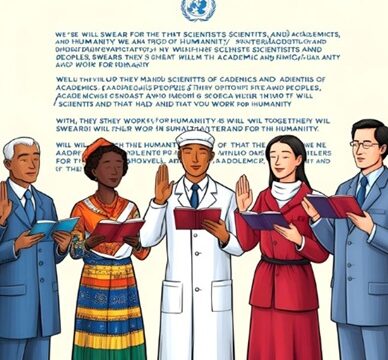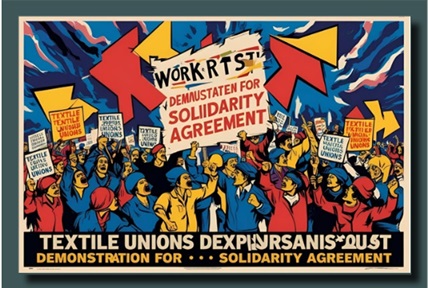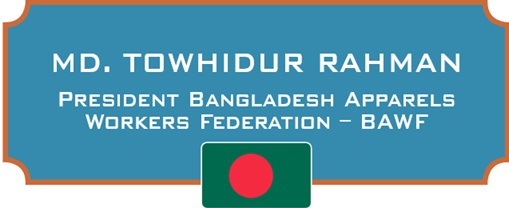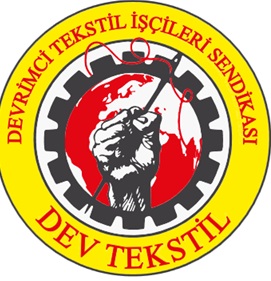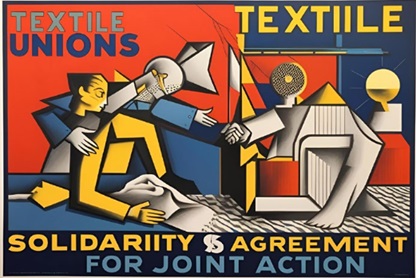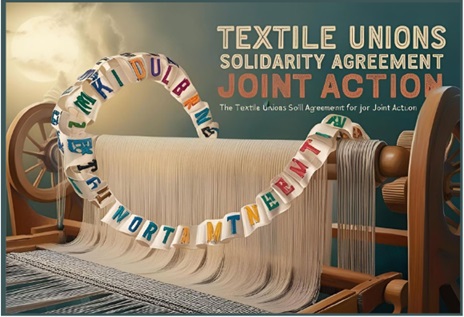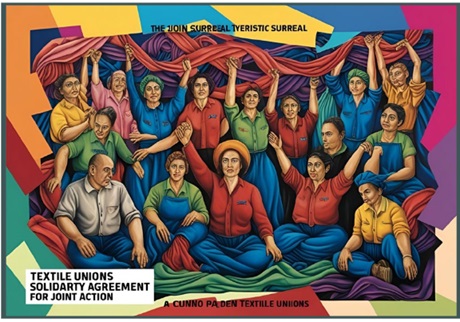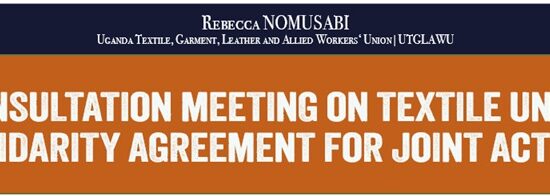Hüseyin Ozan UYUMLU
TÜRKİYE
War is a man-made mass trauma with serious destructive consequences observed for many years. Wars are as old as human history (Karakoç, 2022). Wars made the world a very scary place. Every generation of humanity has suffered violence and death. Many conflicts have occurred between nations, religions and groups (Irmak & Piyal, 2023). When we consider the origins of wars, we see that they are started not by children, but by adults. However, wars violate the rights not only of adults but also of children. The following are the damages caused to children by wars: Death, injury, disability, illness, detention and psychological problems (Karakoç, 2022).
Around one-fifth of the world’s children, some 420 million of them, live in conflict zones. According to UNICEF reports, two out of five children in the Middle East and a quarter of children in Africa live in conflict zones. We see the largest number of children living in conflict-affected areas in Asia (195 million children). Proportionally, 40% (35 million) of children in the Middle East, the region with the highest number of children, live in conflict-affected areas. The Ukraine-Russia War, which started in 2022 and continues to this day, also affects civilians. 7.8 million children were negatively affected by this war (Irmak & Piyal, 2023).
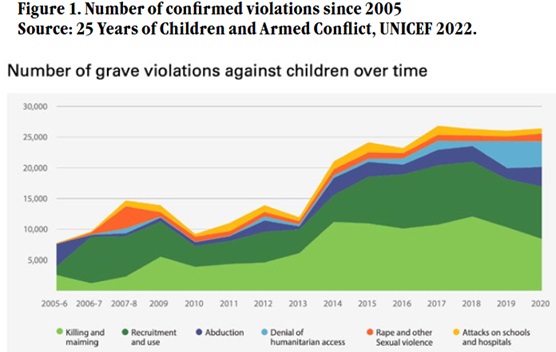

This article analyzes the status of education in war and conflict zones based on reports, investigates the role of international law in this context, and offers recommendations for the protection of the right to education.
The ten worst countries in terms of hardship for children in conflict are as follows: Afghanistan, Central African Republic, Democratic Republic of the Congo (DRC), Iraq, Mali, Nigeria, Somalia, South Sudan, Syria, Yemen (Save the Children, 2019).
Wars and conflicts may have negative effects on children’s education as follows: Physical threats, psychological trauma, economic and social consequences.
Attacks on schools during armed conflicts cause serious damage, both on a physical and psychological level. In November 2016, in the city of Idlib, Syria, at least 22 children were killed in airstrikes on a school complex. Children in besieged Syrian city of Aleppo had no way to flee the constant bombardment for months. Also in 2016, a bomb was detonated outside a school in southern Thailand, just when parents were dropping off their children. The blast killed instantly a father and his four-year-old daughter and injured ten others. Before that, ten children were killed and around 30 injured in airstrikes on a school in Saada in northwestern Yemen (Global Coalition to Protect Education from Attack, 2016).
During the Syrian War it has been reported that hundreds of schools were bombed and became unusable and thousands of students were deprived of education (Irmak & Piyal, 2023). The civil war in the Republic of South Sudan, which began in 2013 and lasted for six years, resulted in the deaths of tens of thousands of people, the destruction of the country’s infrastructure and social systems, the displacement of more than two million people, and the absence of communities from school for generations. During the civil war, school environments became unsafe. Circumstances in which primary education is practiced are particularly difficult under civil war conditions. Being in a ‚war zone‘ has increased people’s insecurity. Children of school age have been subjected to displacement. Furthermore, the majority of boys have been forcibly recruited into the army, forced to work for soldiers or forced into slavery during the last seven years. Since the beginning of the conflict more than 800 schools have been destroyed in South Sudan. Educational institutions, which were already limited in number, became mostly nonfunctional due to the impact of the war. According to 2017 data, approximately 31% of the country’s school buildings have been used for military purposes by armed forces or non-state armed groups, and many educational institutions have been attacked, including direct attacks on students and teachers. While there was a serious shortage of textbooks even before the civil war, basic educational materials such as desks, benches and blackboards were looted from schools in some regions during the conflict. On the other hand, teacher training centers established by non-governmental organizations were vandalized by unidentified persons. Some schools have also been bombed in Sudanese airstrikes. A large number of educational buildings that survived the attacks have also been seized by armed groups, over 100 schools and universities are among the seized buildings, while the number of schools used for military purposes is reported to exceed 250. This situation has directly prevented more than 13 thousand children from accessing their right to education. In the civil war, classrooms were raided and students, teachers and school administrators were killed. Human Rights Watch reported that SPLA-IO soldiers held more than 300 students hostage in schools in Yei River province from late September to late November. In addition, more than thirty teachers were arrested for protesting during the civil war for not receiving their salaries. In Juba, three days after the outbreak of the civil war, non-state armed groups started forcibly recruiting students from schools and used these children, most of whom were under the age of 18, for some work in the war (Baran, 2021).
In armed conflict, schools and teachers often become the target of direct attacks. In conflict zones such as Syria and Yemen, the systematic bombing of educational institutions has been documented. One third of schools have been destroyed, damaged or occupied in the Syrian war. At least 750 educational facilities were damaged or destroyed in the Ukraine-Russia War (Irmak & Piyal, 2023). The use of schools as military bases severely endangers the sustainability of education. The deaths of students and teachers, the destruction of schools, and unsafe educational environments for children are the first effects that come to mind. War destroys not only school infrastructure, but also the hopes and aspirations of entire generations of children. Access to education services is becoming more difficult due to conflicts and the challenges faced in education are increasing (Baran, 2021).
UNICEF reports indicate that children in Syria, where war and conflict have been ongoing for more than 10 years, have limited access to basic services and have experienced 12 years of interrupted education. The long-term impact of the conflict in Syria, as well as natural disasters and health emergencies, has led to one of the world’s most complex and multi-layered humanitarian situations (UNICEF, 2023).
It has been seen that educational institutions are used as military bases in war and conflict zones. This situation has a two-way impact: Both children’s safety is put at risk and education systems are disrupted. This situation interrupts students‘ education process.
It is known that there are children in the position of perpetrators who are encouraged by adults to commit violent crimes and are used as soldiers in war and terrorist incidents in regions where there is an unstable political regime/rule and economic instability. Children are being recruited at alarming rates by armed forces or used as cooks, porters, messengers, spies and even sexually exploited (UNICEF, 2022). Children are often targeted because they are easily manipulated and can be used as soldiers or suicide bombers (Irmak & Piyal, 2023). It is stated that around 300.000-500.000 children worldwide are used in armed conflicts. Human rights violations such as use of children as soldiers and forced labor seriously restrict children’s access to education. Furthermore, these children are exposed to many forms of violence and sexual abuse. The terrible conditions faced by children in war and conflict zones may not only be based on their own experiences. Such violations negatively affect the psychosocial development of children (Karakoç, 2022). Children are also exposed to the negative repercussions of the traumas of the previous generation within a culture of violence and fear (Deniz & Karaman, 2023).
Taking part as a child soldier in wars or environments of terrorism means being both the perpetrator and the victim of severe acts of violence. In a research carried out in the Democratic Republic of the Congo, the psychological and social conditions of 200 former child soldiers and individuals who had experienced military service and war in adulthood were compared. Results show that individuals who participated in armed conflicts as children were exposed to more violence and also committed more violence than adult soldiers. These individuals were found to have more intense trauma-related mental problems, more positive attitudes towards violence and higher levels of desire for violent behavior. Having a favorable attitude towards violence is particularly prevalent among those who voluntarily became child soldiers and those who held higher ranks within armed groups. Early involvement in armed groups not only leads to intense trauma and aggression, but also to serious difficulties in adapting to civilian life (Deniz & Karaman, 2023).
In a study conducted on school-age children in Palestine, it was found that most of the participants were not in school and that the war had a negative impact on their psychology and economic situation, as one would expect. It was understood that the most intense feelings children reflected were fear and anxiety, and economic damages were reflected in children’s lives as not being able to buy the toys they wanted and not being able to receive education (Oseili, 2016).
The psychological impacts of the war environment on students dramatically reduce participation rates in education (Karakoç, 2022). The most frequent psychopathologies found in children in war and conflict zones are post-traumatic stress disorder, dissociative disorders, depressive disorders, anxiety disorders, psychosomatic disorders and sleep disorders (Deniz & Karaman, 2023). Children’s learning capacity is significantly reduced due to conflict-related stress and trauma (Karakoç, 2022). According to the United Nations Children’s Fund, more than one billion children worldwide live in areas affected by armed conflict, war or terrorism—especially low and middle income countries, where 90% of the child and adolescent population resides—. For instance, as seen in the case of Liberia, where the civil war that lasted from 1989 to 2004 caused severe trauma, armed conflicts can last long enough to span children’s entire developmental period. For the people of the Middle East, struggling to survive in the shadow of war and terrorism for many years, armed violence has become a constant source of trauma. Children who grew up in this environment face serious physical, mental, emotional and behavioral problems in both the short and long term. Being exposed to or having witnessed intense and persistent social violence leads to a greater prevalence of trauma-related psychiatric disorders in the general population (Deniz & Karaman, 2023).
Migration is one of the economic and social consequences of war and conflict. People who want to get away from war zones face the problems of living as migrants in the places they migrate to. According to 2016 data from the United Nations High Commission for Refugees, 59.5 million people worldwide were forcibly displaced and more than half of them were children under the age of 18 (Deniz & Karaman, 2023). The migration event causes children to experience many problems. One of the most important of these is their education. Migrant children have the highest need for quality education, but are often among the least able to benefit from it. Studies have shown that the main problems experienced in the education of migrant children are as follows; language/communication problems, lack of coordination in migrant education, schools being unprepared to serve migrant children, teachers not having sufficient knowledge to work with migrant students, inadequacies in teaching materials (Aydeniz & Sarıkaya, 2021).(Aydeniz & Sarıkaya, 2021).
Wars, regardless of the period of history in which they occur, are considered as a phenomenon in which the winners and losers suffer great destruction in the economic, social, military and psychological fields (Oseili, 2016). Wars bring not only life-threatening threats but also challenging experiences such as worsening socio-economic conditions, forced migration, inability to meet daily needs, and destruction of cities and nature (Deniz and Karaman, 2023). The international economy-politics and its actors have taken diplomatic steps to impose certain sanctions on wars and conflicts because they cannot prevent them or their interests do not allow them to do so. In order to prevent civilian casualties in wars and to define war crimes and ensure the prosecution of criminals, four separate legal texts, known as the Geneva Conventions, were established at different dates (1864, 1899, 1906, 1949). According to Article 2 of the Geneva Convention, which has gained international legitimacy with the signature of almost all the countries of the world, it is forbidden for states on both sides to target civilians in wars, without distinction between victor and defeated. The Geneva Convention’s articles will also apply in situations that cannot be defined as war. The International Criminal Court handles the legal process and execution of punishment for crimes that were not prevented during the wars. International institutions and conventions do not ensure equality and validity in practice, as can be seen from Israel’s inhumane practices in Palestine. The necessity to take more and stronger steps in this regard is obvious (Oseili, 2016).
The basic documents that define education as a universal human right are; the Universal Declaration of Human Rights (UDHR, 1948, Article 26), the UN Covenant on Economic, Social and Cultural Rights (1996, Articles 13-14), the UN Convention on the Rights of the Child (1989, 28-29), the Convention against Discrimination in Education, the European Convention on Fundamental Rights and Freedoms (Additional Protocol No. 1, 1952, 2). International human rights documents condemn discrimination and exclusion in education and encourage an environment that is inclusive, pluralistic, critical, participatory and conducive to the full development of the human person. Universal, scientific and human-oriented education model described in these documents must be implemented by the countries that have signed these documents. Article 26 of the Universal Declaration of Human Rights (UDHR), one of the most important of these documents, states that “Education shall be directed to the full development of the human personality and to the strengthening of respect for human rights and fundamental freedoms.” In the same way, the Council of Europe’s Charter on Education for Democratic Citizenship and Human Rights (2010) states that education plays a central role in promoting human rights, democracy and the rule of law, which is the Council’s main objective. According to the European Human Rights Education Systems report, a rights-based education can only be achieved if it ensures equality, participation and inclusion, as well as the prevention and resolution of conflicts. Briefly, rights-based education is considered to be the most effective means to build a society in which everyone’s rights are respected, protected and ensured. (Akyeşilmen, 2014).
There are several international organizations working to prevent violations of children’s right to education in war and conflict zones. UNICEF, an agency within the United Nations, carries out activities such as reporting violations of the right to education in war zones and establishing temporary schools. Education Above All (EAA), an organization that works to prevent attacks on educational institutions and facilities (by state and non-state armed actors), seeks to ensure that education is seen an essential element for human development and thus provides the most comprehensive protection. For this purpose, it established the “Protect Education in Insecurity and Conflict (PEIC,)” an advocacy program. PEIC played the leading role in promoting the Safe Schools Declaration, which includes a commitment to protect schools and universities from military use during armed conflict. This clause is essential to protect schoolchildren, teachers and facilities in times of war. The organization aims that over time the entire declaration will become a universally recognized international standard. The Safe Schools Declaration is more important now than ever as the world watches schools destroyed in Syria, Yemen and other conflict zones (Klanduch & Malik, 2016). Educate A Child (EAC), operating within EAA, supports children around the world who face the hardest challenges in accessing education, such as poverty, discrimination, conflict, challenging geographies and climate change (Education Above All, 2025).
The Global Coalition to Protect Education Attacks (GCPEA) is one of the organizations fighting for children’s right to education. GCPEA was founded in 2010 by organizations involved in education, higher education, protection and international human rights and humanitarian law in emergencies and conflict-affected contexts, worried about the ongoing attacks on educational institutions, students and staff in countries affected by conflict and insecurity. The objectives of GCPEA are set as follows:
-Emphasize the frequency and impact of attacks on education in an environment of conflict and insecurity and increase public support for safe education.
-Encourage better systems for monitoring and reporting attacks on education.
-Promote effective programs and policies, which include protecting education from attacks, preventing attacks and responding to attacks.
-Promote observance of existing international education law and, where necessary, reinforce international norms and standards.
-Promote and encourage various accountability measures to tackle impunity for attacks on education (Global Coalition to Protect Education from Attack, 2025).
Save the Children which has been active in the field of children’s rights for more than 100 years, seeks to improve the living conditions of children, strengthen their access to health and education services, improve the economic conditions of children and eliminate the victimization of children due to natural disasters and wars (Save the Children, 2025).
There are numerous national and international organizations established to prevent conflict and build social peace. Education is a key area of focus for these organizations, many of which have come together within the framework of War Resisters International (WRI). One of these organizations, the Global Partnership for the Prevention of Armed Conflict (GPPAC), works to foster a culture of peace in places where regional wars continue and where violence against gender, race and beliefs is widespread (Özmen, 2020). GPPAC seeks to prevent conflict rather than react to it (GPPAC, 2025).
The efforts made by international aid agencies and right-to-education organizations are important, but a high level of commitment is needed to achieve lasting peace in the world. In this regard, the United Nations, which is supposed to be a pioneer in contemporary international politics, needs to change its structure and increase its sanctioning power. Due to its current financial structure and functioning, the financial situation of the United Nations, which is influenced by economically powerful states, is getting in the way of its mission, hence, arrangements should be made to prevent this.
The international organizations should take the initiative to “end all wars as soon as possible”, to prevent conflicts and reduce disparities between nations in terms of resources and to ensure that priority is given to the protection of civilians and children (Karakoç, 2022). In this context, the Geneva Convention, signed in 1949, should be updated. Since 1949, the state, war, peace, civil life and urban structure have undergone tremendous changes. Consequently, it would be useful to reconsider international peace organizations and peace conventions according to the era and in a way that they would serve the real benefit of humanity.
Permanent peace is not only possible through economic development or political cooperation, but also through education. Providing children with a quality and safe education empowers them on an individual level and enables them to build a more just and peaceful world. International community should take stronger steps to protect education, develop more comprehensive policies to counter the effects of war and provide child-centered solutions. Education is one of the most powerful tools for building peace, hence defending this right is laying the foundations for a better future. Everyone, regardless of race, age, gender, religion, economic status, nationality and ideology, has a common and human responsibility for the creation of a world of complete peace. All formal or non-formal education programs throughout life, regardless of their type, should include the aims of education for peace among their objectives (Demirtaş, 1991). Schools have a critical role to play in peace education. Children must be introduced to the values associated with peace from the moment they start school (Aktaş, 2012). Education for peace helps students develop critical thinking skills and learn non-violent ways of resolving conflicts. This approach enables students to adopt values such as empathy and solidarity (Canadell, 2022). In the United Nations General Assembly, the purpose of peace education is expressed as moving from a culture of war and violence to a culture of peace and non-violence (Aktaş, 2012). Raising children as anti-fascist, democratic and peaceful individuals will give hope for a happy future where rights violations will decrease.
Bibliography
Aktaş, Ö. (2012). War and peace in history education: Evaluation of secondary school pupils‘ knowledge and attitudes about war and peace issues in terms of several variables (PhD thesis). Gazi University.
Akyeşilmen, N. (2014). International human rights regulations and education: A rights based approach to education. National Education, (201), 5–16.
Aydeniz, S., & Sarıkaya, B. (2021). Opinions of teachers about the problems in the education of immigrant children and solution suggestions. National Education, 1(50), 385–404.
Baran, M. A. (2021). The effects of civil war on education in the Republic of South Sudan. Journal of International Leadership Studies: Theory and Practice (International Journal of Leadership Studies: Theory and Practice), 4(1), 51–61.
Cañadell, R. (2022). Education for peace during wartime. Politeknik. https://politeknik.de/p13150/
Deniz, M. E., & Karaman, H. (2023). Being a child during war. E. Öztürk (Ed.), The psychology of war (1st edition, pp. 58–71). Ankara: Clinics of Türkiye.
Demirtaş, A. (1991). Peace, war and education. Hacettepe University Faculty of Educational Sciences Journal, 6, 41–46.
Education Above All. (2025). Educate A Child. https://www.educationaboveall.org/our-programmes/educate-a-child
GPPAC. (2025). Past projects. https://www.gppac.net/past-projects
Klanduch, P., & Malik. (2016). Protection of education in conflict zones. Protect Education in Conflict Zones. https://protectingeducation.org/news/protecting-education-in-conflict-zones/
Global Coalition to Protect Education from Attack (GCPEA). (2025). About us. https://protectingeducation.org/about-us/
Irmak, R., & Piyal, E. (2023). Conflict and education. International Journal of Educational Studies, 10(2), 45–67.
Karakoç, B. (2022). Education and children’s rights. Journal of Educational Sciences and Human Rights, 5(1), 89–102.
Oseili, M. (2016). The effects of wars and regional conflicts on children’s mental health and the Palestinian example (Master’s thesis). Istanbul University.
Özmen, Ü. (2020, April 7). War training. BirGün Newspaper. https://www.birgun.net/makale/savas-egitimi-290697
Save the Children. (2019). Protecting children in 21st century conflict. https://resourcecentre.savethechildren.net/document/stop-war-children-protecting-children-21st-century-conflict/
Save the Children. (2025). About us. https://www.savethechildren.net/about-us
UNICEF. (2022). 25 years of children and armed conflict. https://www.unicef.org/media/123021/file/25%20Years%20Children%20in%20Armed%20Conflict.pdf
UNICEF. (2023). Twelve years: Syrian children endure one brutal crisis after another. https://www.unicef.org/syria/stories/twelve-years-syrian-children-endure-one-brutal-crisis-after-another




